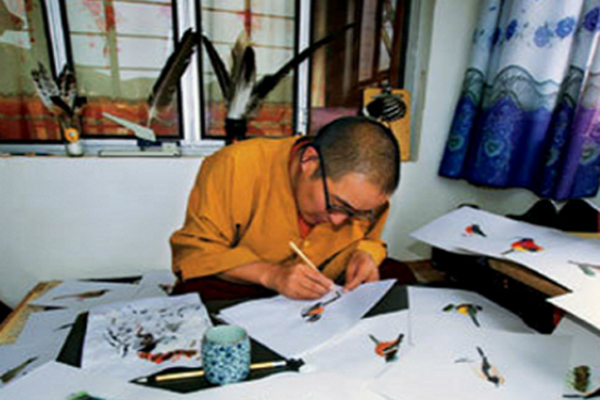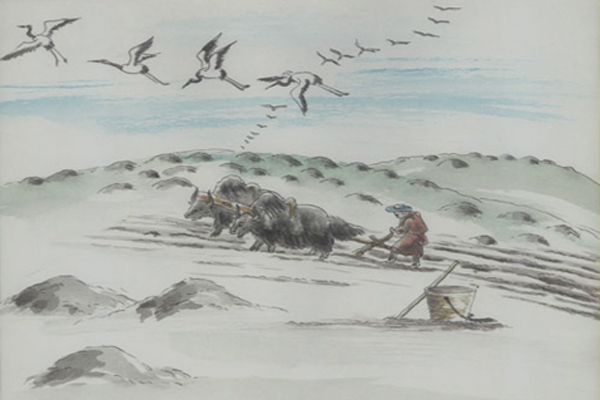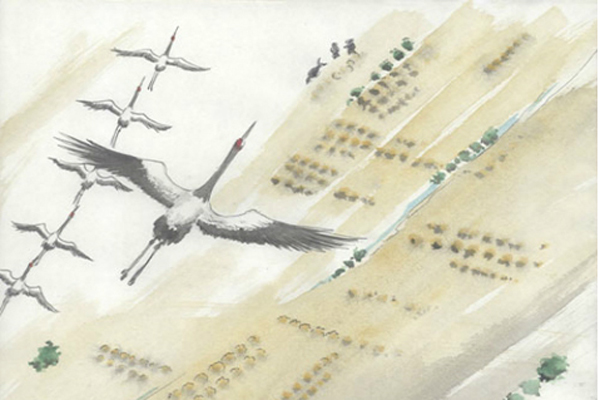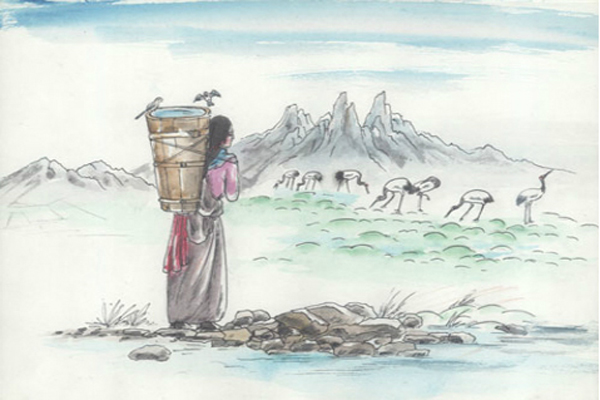Tashi Sange is a Buddhist khenpo (scholar) at Baiyu Monastery in Golog, Qinghai, and the founder and head of the Nianbaoyuze Environmental Protection Society. He has become a local legend in Qinghai for his efforts to protect – and to paint – the region's birdlife. In this series of pictures, drawn especially for chinadialogue, he shares a folk tale about one of Tibet's sacred birds, the black-necked crane.

My name is Tashi Sange. My home is in Golog prefecture, Qinghai, to the south of the Nianbaoyuze Mountains. There is a huge wetland there, called Narangsang. A relative of mine, Morao, lives by that wetland, and he told me this story. It happened decades ago.

In summer, the Narangsang wetland is very dangerous and people and livestock stay away. Anyone who strays there is liable to disappear without trace – that is, until their bones surface years later. And so the wetland becomes a paradise for black–necked cranes: hundreds of them gather here every summer to breed. They used to arrive in May or later. By then, the herders had started working in the fields and had lined up piles of cattle dung to use as fertiliser.

Locals say the cranes used those piles of dung as landmarks. But now the birds arrive in March, before the herders have moved to their summer pastures. Perhaps because they have no dung to guide them, they have changed their migration route. The herders say the weather stays warm for longer and the cranes now leave in November instead of October. The shifting climate may also be why their numbers have fallen – now only 30 or 40 come to the Nianbaoyuze Mountains each year.

A traditional Tibetan wedding may see a girl married off to a family in a faraway village. Sometimes, she will never return. The cranes arrive in summer and leave in autumn, and live near the herders' homes. The herders know the routes the cranes take. The girls see the cranes flying from their own village and sing songs of home.
